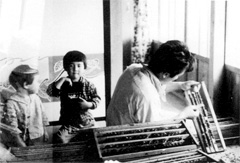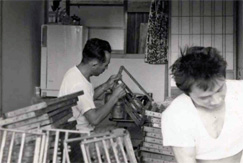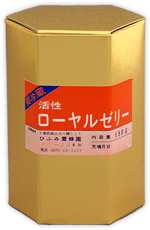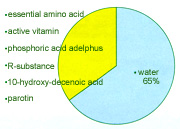
Royal jelly became well known about half a century ago when it saved the life of the Pope of the time. Those who wished to have a healthy life started looking for royal jelly, but at that time, effective collection method had not yet been discovered. Royal jelly is a food produced in small quantities by worker bees for the queen bee only.
Tasaku and Tomoe Hihumi, the founder of the apiary worked enthusiastically to develop the method.

First they started with making royal cells with beeswax by hands. After trial and error for several years, they finally developed “72-hour harvest” method in which they hide the queen bee while they place a 2 to 3-day-old larva in the artificial royal cell, and harvest royal jelly at the royal cell 72 hours later. Since then they became able to harvest and sell large quantities of royal jelly. Still today, it is the method used by most bee keepers.
They introduced the method to other beekeepers and the method quickly became widespread in the industry.
It is often commented that they should have patented the method, but they say they are very happy to see that beekeepers are making better business. After all they love bees and beekeepers.

Young worker bees secrete royal jelly from their hypopharyngeal glands using flower nectar and pollen. All the larvae are the same when they are hatched, but the one who is fed loyal jelly has a lifespan 40 times longer than the other worker bees and incredible stamina to lay 2,000 eggs everyday.


It is a high protein food that includes over 40 kinds of natural nutritional elements. The elements include R substance, which is produced only by honey bees, 10-hydroxy-decenoic acid, parotin, acetylcholine, and other natural nutritious elements, all of which are effective to anti-aging, prevention of cancers and lifestyle diseases, stabilizing autonomic nerves, reducing menopause symptoms, and forcing. For better result, daily intake of royal jelly is strongly recommended.
Keep refrigerated.


